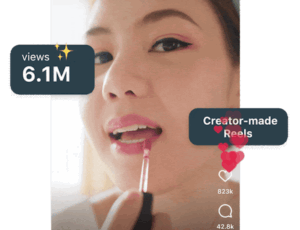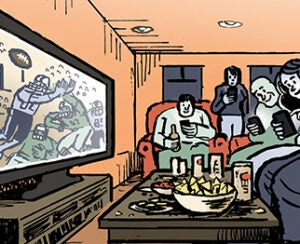 “The Sell Sider” is a column written by the sell side of the digital media community.
“The Sell Sider” is a column written by the sell side of the digital media community.
Today’s column is written by Rachel Parkin, senior vice president of strategy and sales at CafeMedia.
Two years ago, I saw the future of programmatic not as a budget channel, but rather a conduit through which all media changed hands. Although I still believe the same future is likely, we don’t feel any closer to that goal.
Programmatic is often treated as a separate tactic with a separate budget, yet the opportunity still stands to run all straight media line items programmatically. What will it take for programmatic to simply become the standard for how we deliver media?
The advantages to advertisers of using programmatic for all media purchases are many. A unified buying method gives advertisers the impression selection control and global frequency and reach management they desire across all digital spend. A holistic investment strategy also reduces duplication and waste from bifurcating programmatic into a separate tactic.
And perhaps most importantly, by joining programmatic and custom sponsorships, buyers can derive the same value from their programmatic spend that they get today from direct-sold buys, including using working media to fund custom elements, such as content and branded integrations.
Acknowledging that one benefit of programmatic is the ability to optimize throughout the flight to maximize ROI, advertisers will also want to leave some flexibility in their investment for performance or efficiency initiatives. Balancing budgets between guaranteed and nonguaranteed programmatic media lines gives advertisers the best of both worlds: the power to choose which impressions they want for custom programs or performance while 100% of media components transact programmatically.
A Step In The Right Direction
A number of trends in the market are getting us one step closer to a world where all media transacts through programmatic pipes.
Integrated programmatic and media teams, for example, are becoming increasingly prevalent. Training media-buying teams to manage programmatic as part of the overall digital investment strategy is a first step to ensuring that an advertiser’s media investment is collectively working toward the same goal. Rather than treating programmatic spend as a silo, a unified perspective enables programmatic media to fund custom sponsorship programs.
2017 may very well be the year of programmatic guaranteed. With more technology platforms releasing solutions to facilitate programmatic reservations, both buyers and sellers have the confidence and commitment needed to increase not only budgets, but also the scope of what can be transacted programmatically.
AdExchanger Daily
Get our editors’ roundup delivered to your inbox every weekday.
Daily Roundup
We also saw the emergence of header bidding. Header bidding opens the door for publishers to place programmatic at the top of the waterfall and prioritize programmatic campaigns akin to any direct-sold deal.
Finally, there are data-enhanced bid streams. With the recently released Open RTB 2.5 specs, tactic IDs will soon be passed into the bid stream from the DSP to the SSP. Being able to evaluate performance and delivery by strategy, such as first-party audience data overlays or other targeting parameters, goes a long way toward ensuring the programmatic pipes are working to their fullest capabilities.
Moving To A New Programmatic Reality
Forecasting is the missing secret sauce to bridge the gap between an advertiser’s strategy and publishers’ inventory. To build guaranteed media plans that execute programmatically, all sides need a clear understanding of the overlap.
Knowing how many impressions can be delivered via focused strategies and how many need to be broadly targeted to reach overall delivery goals aligns expectations and sets needed strategy benchmarks. Building a forecasting system based on historical data into the existing RTB pipes would go a long way to show buyers and sellers what’s possible.
While more intelligence about buyers’ strategies is a great stepping stone, enhancing the bid stream with information about publisher inventory controls, including audience, brand safety or viewability, helps ensure that buyers and sellers aren’t duplicating efforts and reduces opportunities for friction to slow or impede programmatic pipes.
Even if advertisers and publishers have perfect information, DSP algorithms also play a big role in determining bid frequency. Adding more flexibility to control buy-side pacing in the technology platforms and allowing buyers to determine how many of a publisher’s impressions they want to bid on would help meet guaranteed delivery goals, too.
Beyond data and technology, the pricing structure for both DSP and SSP fees needs to support the flow of premium, high-impact and custom executions via programmatic. A software-as-a-service pricing model does just that. Many savvy buyers have been ahead of this curve, and now both publishers and SSPs are catching wind of its benefits.
Likewise, inventory pricing shouldn’t be dictated by channel (programmatic vs. direct); it should reflect the quality and value of the inventory being purchased, regardless of how it is delivered. It’s time for buyers to do away with the notion that programmatic is cheap. Publishers need to let go of the idea that programmatic disintermediates advertiser and agency relationships.
Server-side header integrations and other technology improvements will certainly minimize bid loss and maximize the opportunity for programmatic growth over the long run.
These crucial elements will make it possible for all media to transact programmatically. The vision of a future where programmatic is the ultimate conduit for media is within our grasp.
Follow CafeMedia (@CafeMedia) and AdExchanger (@adexchanger) on Twitter.











